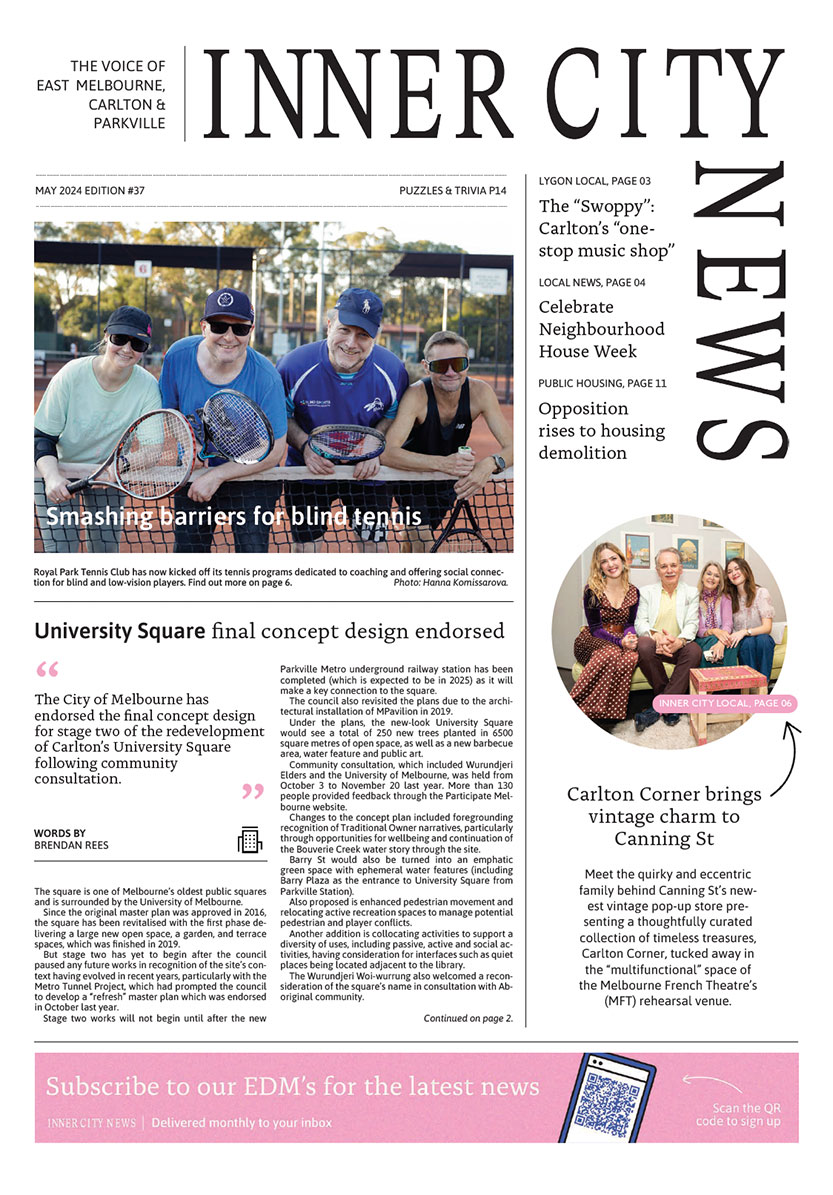Carlton’s citizen soldiers
Up until 1948, Australia had no permanent standing regular army. Instead, it relied on “citizen soldiers”; young men who lived at home rather than in a barracks and held regular civilian jobs, but who donned a uniform to parade and train in military skills in their spare time, after work and at weekends.
Only a small core of professional soldiers was maintained whose main task was training, making sure that in a time of war the “citizen soldiers” could be trained up quickly to be combat ready. The citizen soldier army was normally referred to the “militia”. Most militia units were infantry regiments, but there were also specialist engineering, medical and artillery units.
In the years between the First and Second World Wars, Carlton was the home of two militia units, an infantry regiment based in a drill hall in Grattan St, and an artillery regiment based in a drill hall and depot in Park St, North Carlton. This latter was the 8th Field Regiment, Royal Australian Artillery. The men of this unit trained regularly in their drill hall in North Carlton, and from time to time put on public events and displays for their relatives and friends.
For example, in June 1936, The Age newspaper reported that the 8th Field Regiment was inspected by Major General Sir Thomas Blamey at their drill hall, and “an interesting programme of a varied nature” arranged for the entertainment of parents and friends. This included boxing, wrestling and physical culture displays, but also gun drills and the firing of blank rounds from their artillery pieces. One can imagine the effect that this had on the residents of nearby streets, especially if they had not been forewarned.
When war was declared with Germany in 1939, all members of militia units were called up for compulsory military service, and training became more serious. In October 1939, a huge camp was organised for the militia in Seymour. Ten special troop trains and five ordinary trains took 6000 militiamen to Seymour to begin one month’s training under war-time conditions. Among them was the 8th Field Regiment.
When the Japanese entered the war in December 1941 things became critical as Australia was now under direct threat of invasion. The 8th Field Regiment was moved north to Bonegilla in central Victoria for training, and then to Queensland for further training and coastal defence duties in the area between Brisbane and Tweed Heads. The regiment was finally sent into combat in early 1943 when it went to New Guinea to engage the advancing Japanese forces. In September 1943, the 8th Field Regiment was disbanded and its members and equipment transferred to other artillery regiments as reinforcements. These other regiments where then sent to the island of Bougainville just to the east of New Guinea where they engaged in heavy fighting with Japanese forces in 1944 and 1945. Men from the now disbanded 8th Field Regiment were probably involved in many of the significant battles on that island.
After the war ended in 1945, the Australian Government came to the conclusion that a part-time partially trained militia was not going to be sufficient for the defence of the nation, and that a fully trained professional standing army was required. The result was that the militia was disbanded, and a regular Australian army created.
At about this time, the depot in Park St, North Carlton, where the 8th Field Regiment had been based before the war, was renamed the Bougainville Barracks, a name it retained for the next 45 years. In 1994 Bougainville Barracks was closed and the land sold by the Defence Department. Today the site is an estate of town houses. •
Caption: The guns of the Carlton-based 8th Field Regiment, Royal Australian Artillery (Militia), being loaded onto a train, probably at Richmond Station, in 1939. (Photo: Argus Collection of Photographs, State Library of Victoria).

Carlton Corner brings vintage charm to Canning St



 Download the Latest Edition
Download the Latest Edition